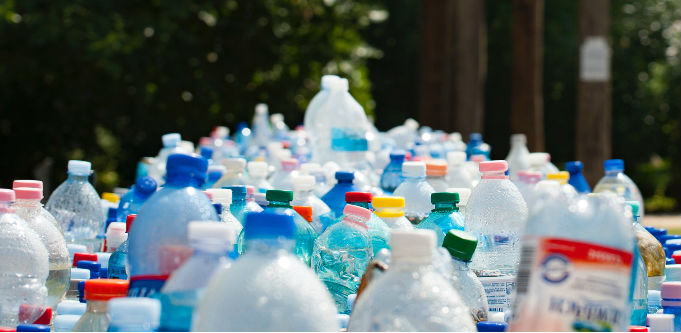
Even before we hit Plastic Free July, the writing was on the wall – quite literally in some cases. Throughout Victoria, Woolworths has had signs up for months telling customers to get ready for the phasing out of single-use plastic bags.
In cafes and restaurants, there are discounts offered if you bring in your own cup – and often you have the option to buy one instead of using a disposable takeaway. The underlying message is clear: we are using too much plastic, and it’s time to make a change.
But habits are hard to break, and even when you do everything within your power to cut down and quit single-use plastics, there’s still almost no reasonable way to avoid them completely. Society is undeniably structured around the convenience of plastic.
It’s straws in your drink, even if you don’t ask for one. It’s having a flimsy bag full of more flimsy bags you’re never going to use. It’s piles of fresh vegetables in the supermarket wrapped in cling-wrap. It’s takeaway coffee cups that can’t be recycled because of the coating that keeps them waterproof. It’s plastic cutlery with your food order that ends up in the bin, unused.
Initiatives like Plastic Free July are good because they encourage us to be more aware, to question behaviours we take for granted, that after a while will seem obvious. Using a durable drink bottle. Swapping out plastic bin liners for newspaper. Choosing the cardboard-packaged item instead of the plastic-wrapped one. Not bagging every separate piece of fruit and veg at the shops – knowing that leaving them loose is actually okay.
Plastic Free July is not a perfect solution. The fact of the matter is that there isn’t one – if there was, we’d be doing it already. In reality, the situation is more complex than we would like. Some people need single use straws. Others need pre-cut vegetables wrapped in plastic. For real, big impact, change we need to see real alternatives. More biodegradable substances being used in the place of plastic. Better recycling systems.
The deeper you dig, the more complex it gets and it’s easy to feel like you’re not making a difference. Changing things on a personal level is not going to fix the problem – but it’s a grassroots step towards bigger things. So what can be done, straight away?
Shop around when it comes to shopping bags
The current situation: Did you know that a single-use shopping bag can take up to 1000 years to break down? And that many of them end up in waterways – and in the stomachs of sea creatures?
The fact that they have been banned in South Australia since 2009 shows that our reliance on them is, in fact, habit – and that we can learn to use alternatives. Last week, Woolworths – after months of warning – phased out the use of these bags in its Victorian and Western Australian stores. It didn’t go well. There were claims that there would be negative impact on health – which were quickly refuted. People reacted violently. The store was forced to temporarily provide (more durable) plastic bags for free.
But these are teething issues – the bag ban is being rolled out in more and more stores, and the fact is, people have become used to bringing their own bags to those stores. It’s just a little inconvenient to start with.
Alternatives: Bring your own. Gather up every tote bag and freebie you’ve amassed over the years and load them up with groceries.
Find yourself bagless at the counter? Every shop that has phased out single use plastic bags has other kinds of bags available. They cost anywhere between 15c to $2.50 and are designed to be wiped down, reused or recycled.
Too bulky? There are reusable bags that fold down to the size of a fist (or smaller) and are designed to be clipped onto a belt or thrown into a handbag for convenience.
See how different food storage options stack up
The current situation: Only used half an onion? Cover it with cling wrap and put it in the fridge. Packing lunch? Clingwrap again, and perhaps a zip lock bag. Taking a salad to a barbeque? More cling wrap. The science is still out on how long it takes for this kind of plastic to break down, mostly because we haven’t had it long enough to study, but we do know it falls into the same traps – and waterways – as single use plastic bags.
Alternatives: Salads and packed lunch? Beeswax wraps work like cling wrap except they can be washed and re-used.
For half-used fruit and veg, they can be stored in plastic containers, which can then be washed and re-used. Get takeaway food from time to time? The containers your noodles come in can be used in the same way; though their lifespan isn’t quite as long, it’s a good way to re-purpose.
Take out the takeaways
The current situation: In his series The War on Waste, comedian Craig Reucassel pointed out that every half hour Australians send a tram’s worth of disposable coffee cups into landfill. Disposable coffee cups might seem recyclable – after all, they feel like cardboard. But there’s a waterproof lining that makes things complicated. Ultimately, they just end up in the bin.
Alternatives: Bring your own. More and more re-usable cups are coming onto the market – from the simple concept of a ‘Keep Cup’ (an insulated cup with a lid that can easily be washed) to the more space age type that connects to your bank account. Many cafes actually offer a discount if you bring your own cup (or if you purchase a re-usable one from them) which, over time, will offset the initial outlay.
By Elizabeth Flux

We help Melbourne to identify and solve the big challenges of today to make a difference tomorrow


COMMENTS
Reader comments have been turned off on this post.